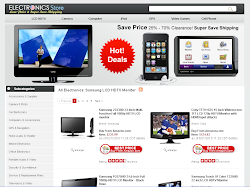Plasma TV, LCD TV, rear projection TV, I think I'm gonna scream! The trend toward ever-bigger TV screens is evident. One reason is the improvement in picture quality in a growing number of TVs with 1080p (1920x1080) native screen resolution. Native screen resolution indicates the number of pixels, or picture elements, on the screen. The more pixels, the finer the detail a screen can display. You can appreciate this level of detail most on a 50-inch screen, or larger, but you might see some subtle improvements on 40- to 47-inch screens also. 720p sets have been the front-runner because of price, but now you'll find a growing number of 1080p sets at lower prices, giving you much more of a choice.
So lets break down some of your choices. LCD TVs, come in common sizes of 17 to 52 inches and are very slim. The pros to a LCD TV are the wider range of sizes, and greater choice of 1080p sets than plasmas. They have brighter images and most have no reflections from the screen. They are lighter weight and they use less power. The cons are most have limited viewing angle. They do not match plasmas for deepest blacks and smooth motion.
Plasma TVs come in common sizes of 42 to 60 inches and are also slim. The pros, they have virtually unlimited viewing angle. Much deeper blacks and better contrast than on LCDs. There is no motion blur and more screen for the money. The cons, shiny screens show reflections in bright rooms. Images may leave a temporary or permanent impression. They use more power and there are fewer 1080p plasma sets to choose from than LCD 1080p sets.
Rear-projection TVs come in sizes of 50 to 70 inches. The pros, you get the most screen for your money with a wide selection of 1080p sets. The cons, they are much bigger and most go 12 to 20 inches deep. There is a narrower viewing angle than on plasmas. You must periodically replace the bulb, which can run you from $200 to $300. They have been more repair prone.
Is there a clear winner? The vast majority of consumers are buying both the LCD and plasma flat panels rather than rear-projection. Neither LCD nor plasma are the clear winner for quality, there are excellent sets of both types available. Size does matter. Carefully choose the size screen you are most interested in and fits the size of your room best and that may dictate the type set you buy. If you truly want a jumbo screen for a large room and home theater, then rear-projection is the way to go. Obviously for the smaller sizes you have to go with the LCD. They are generally brighter than plasma and have less reflections, so they look better in bright rooms. LCDs are also better for playing video games or for use as a monitor because they are not subject to burn-in from fixed images displayed for a long period as plasma TVs are.
For the overlapping sizes, you must look at the viewing angles of your room and of course your budget. A 1080p set is the way to go, especially if your considering HD programming. But don't completely rule out the 720p sets if you are going for the smaller size screens. In the smaller sizes some 720p sets are almost indistinguishable from the 1080p sets.
One last item of thought, skip the extended warranty. LCDs and plasmas have been very reliable for the first three years which is the period covered by the extended warranty, so there's little sense in spending several hundred dollars for a warranty.
My name is Joseph V. Formale and I am the Creator of http://www.Only-Reliable-Reviews.com If you found this article useful, come on over to my website and see my full Best of the Big Screens review. Get a breakdown of the top-rated sets available today.
Related : Cheap Handbags4u


0 comments:
Post a Comment